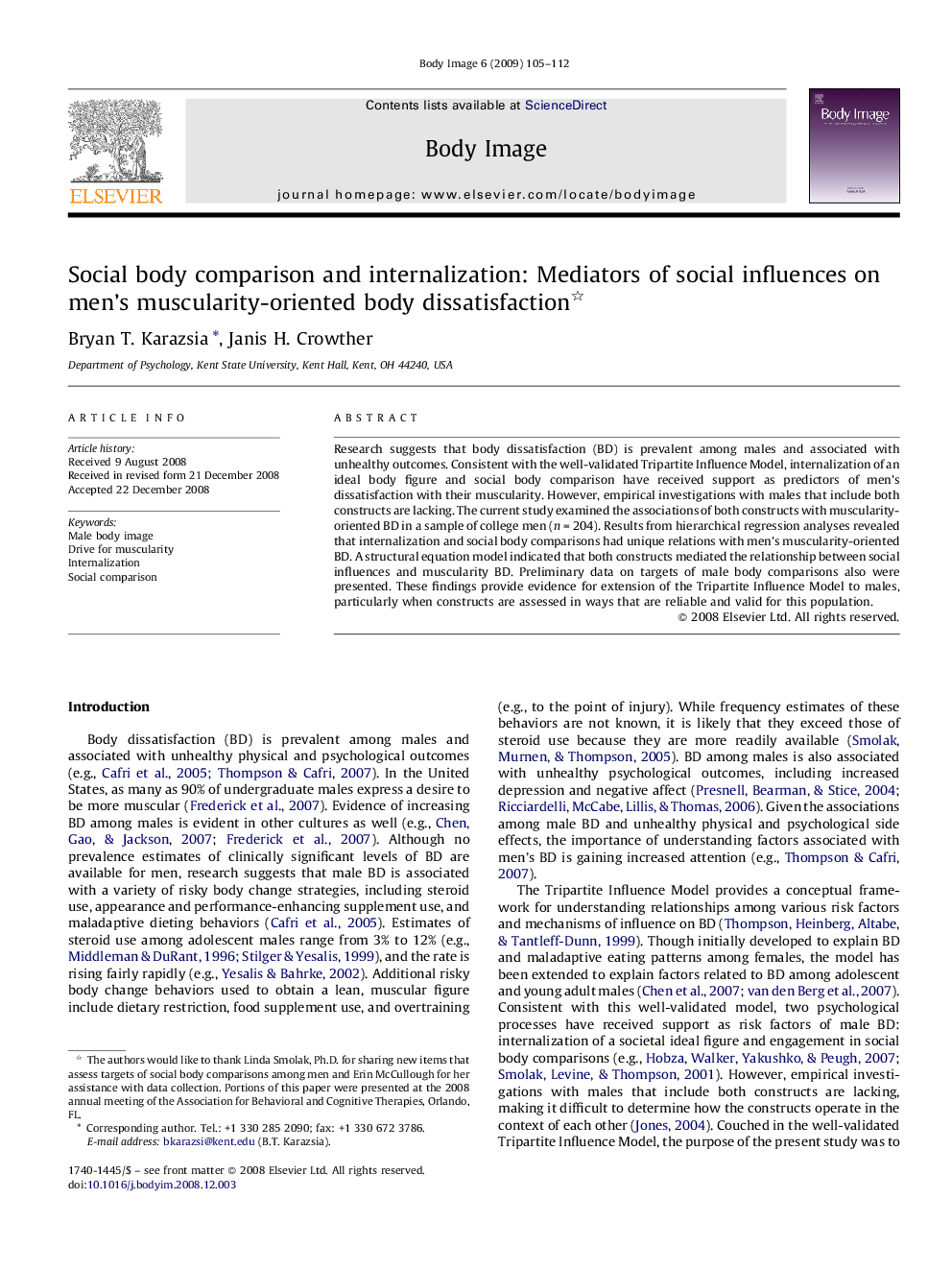Research suggests that body dissatisfaction (BD) is prevalent among males and associated with unhealthy outcomes. Consistent with the well-validated Tripartite Influence Model, internalization of an ideal body figure and social body comparison have received support as predictors of men's dissatisfaction with their muscularity. However, empirical investigations with males that include both constructs are lacking. The current study examined the associations of both constructs with muscularity-oriented BD in a sample of college men (n = 204). Results from hierarchical regression analyses revealed that internalization and social body comparisons had unique relations with men's muscularity-oriented BD. A structural equation model indicated that both constructs mediated the relationship between social influences and muscularity BD. Preliminary data on targets of male body comparisons also were presented. These findings provide evidence for extension of the Tripartite Influence Model to males, particularly when constructs are assessed in ways that are reliable and valid for this population.
Body dissatisfaction (BD) is prevalent among males and associated with unhealthy physical and psychological outcomes (e.g., Cafri et al., 2005 and Thompson and Cafri, 2007). In the United States, as many as 90% of undergraduate males express a desire to be more muscular (Frederick et al., 2007). Evidence of increasing BD among males is evident in other cultures as well (e.g., Chen, Gao, & Jackson, 2007; Frederick et al., 2007). Although no prevalence estimates of clinically significant levels of BD are available for men, research suggests that male BD is associated with a variety of risky body change strategies, including steroid use, appearance and performance-enhancing supplement use, and maladaptive dieting behaviors (Cafri et al., 2005). Estimates of steroid use among adolescent males range from 3% to 12% (e.g., Middleman and DuRant, 1996 and Stilger and Yesalis, 1999), and the rate is rising fairly rapidly (e.g., Yesalis & Bahrke, 2002). Additional risky body change behaviors used to obtain a lean, muscular figure include dietary restriction, food supplement use, and overtraining (e.g., to the point of injury). While frequency estimates of these behaviors are not known, it is likely that they exceed those of steroid use because they are more readily available (Smolak, Murnen, & Thompson, 2005). BD among males is also associated with unhealthy psychological outcomes, including increased depression and negative affect (Presnell, Bearman, & Stice, 2004; Ricciardelli, McCabe, Lillis, & Thomas, 2006). Given the associations among male BD and unhealthy physical and psychological side effects, the importance of understanding factors associated with men's BD is gaining increased attention (e.g., Thompson & Cafri, 2007).


